Abstract
An enzyme-linked immunosorbent assay has been used to diagnose serologically the prevalence of Helicobacter pylori infection in Asian life-long vegans. There was no difference in the seropositivity between these individuals and a group of age- and sex-matched Asian meat-eaters, indicating the meat consumption is not a risk factor for H. pylori infection. However, both Asian groups had a higher prevalence of infection than age- and sex-matched Caucasian meat-eaters. Additionally, the Asian individuals had a wider range of specific IgG antibody concentrations than the Caucasians. This did not appear to be due to antigenic cross-reactivity between H. pylori and Campylobacter jejuni. The significance of these observations to the establishment of cut-off levels for the serodiagnosis of certain ethnic groups is discussed.
Full text
PDF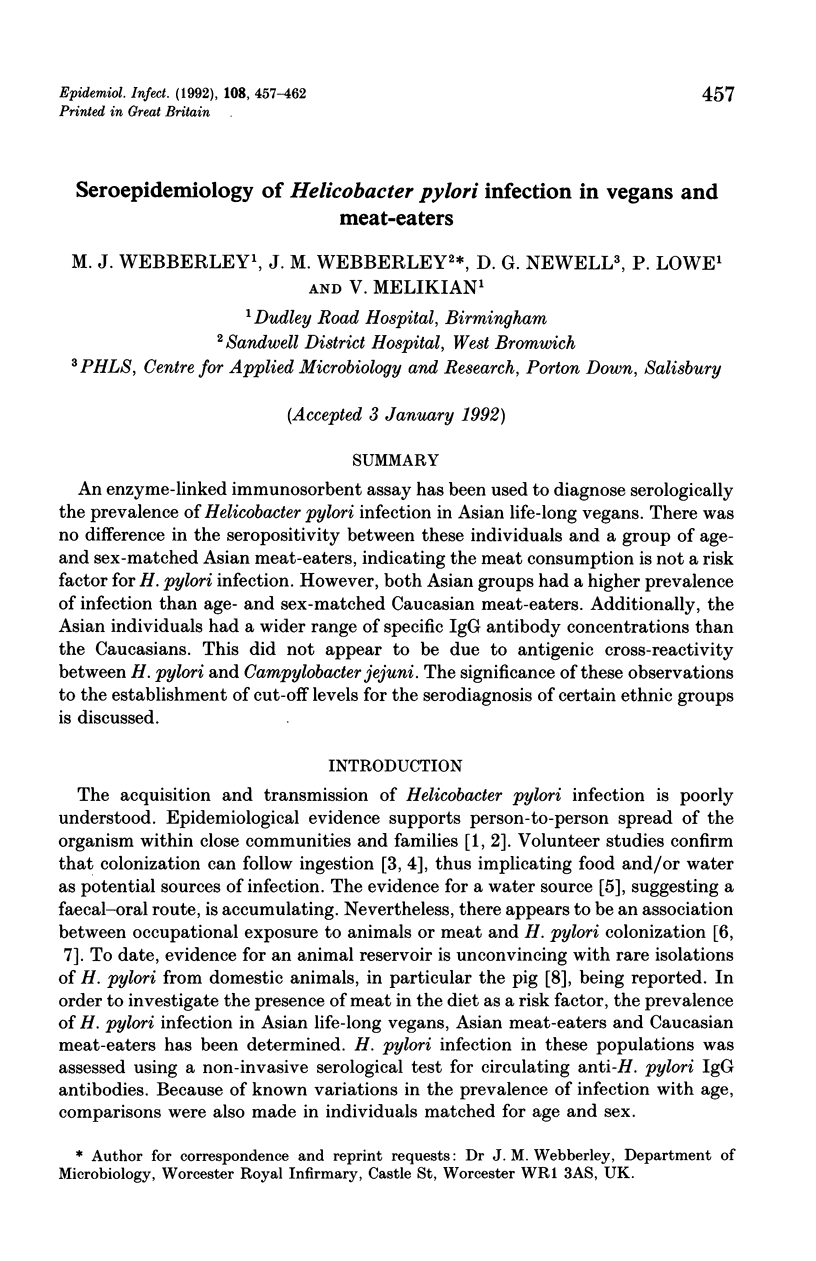
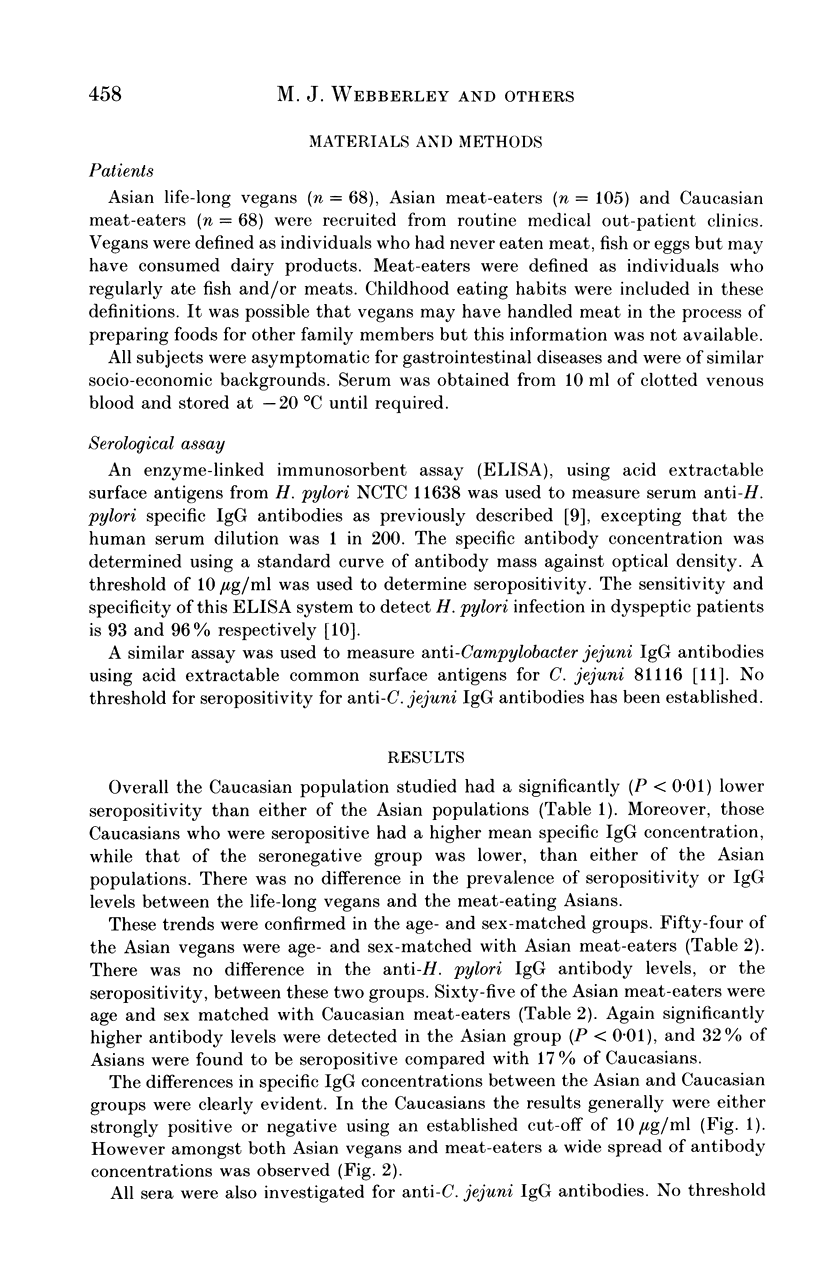

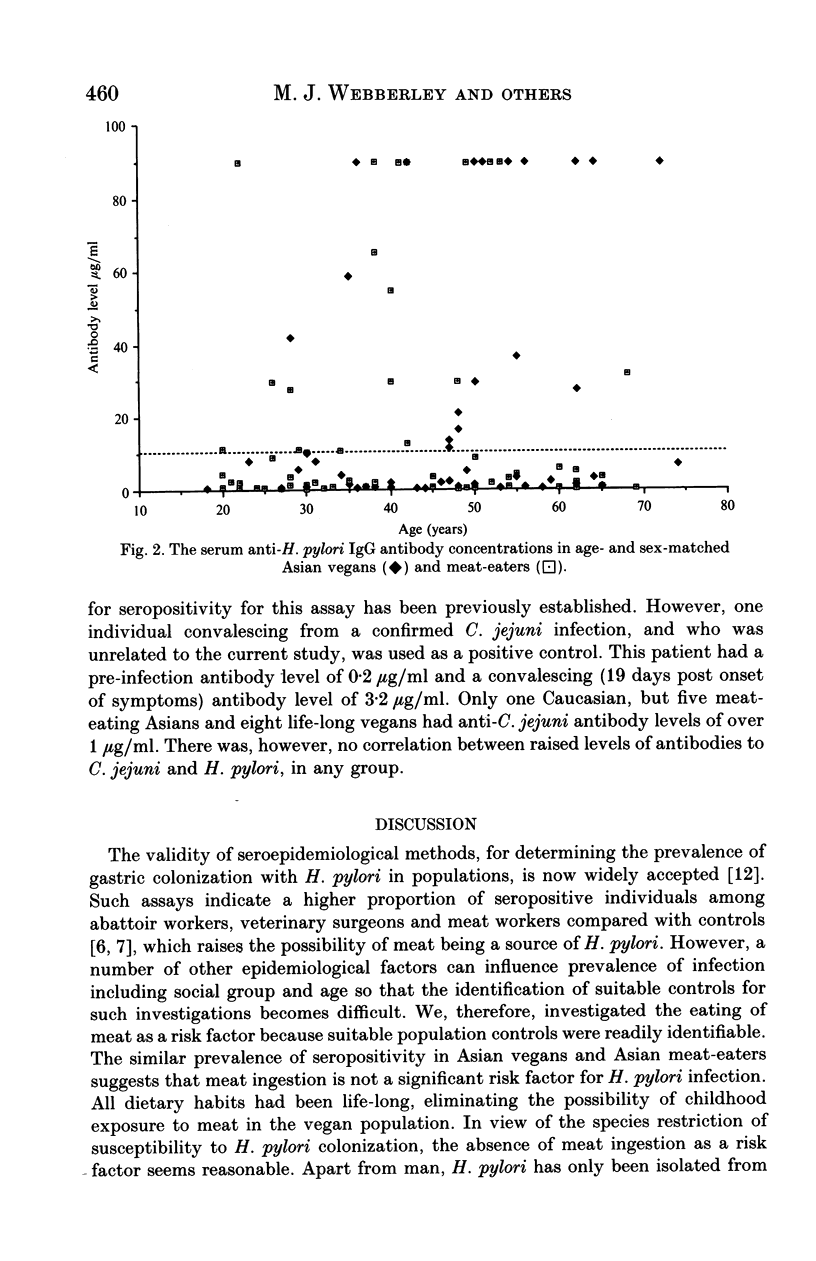
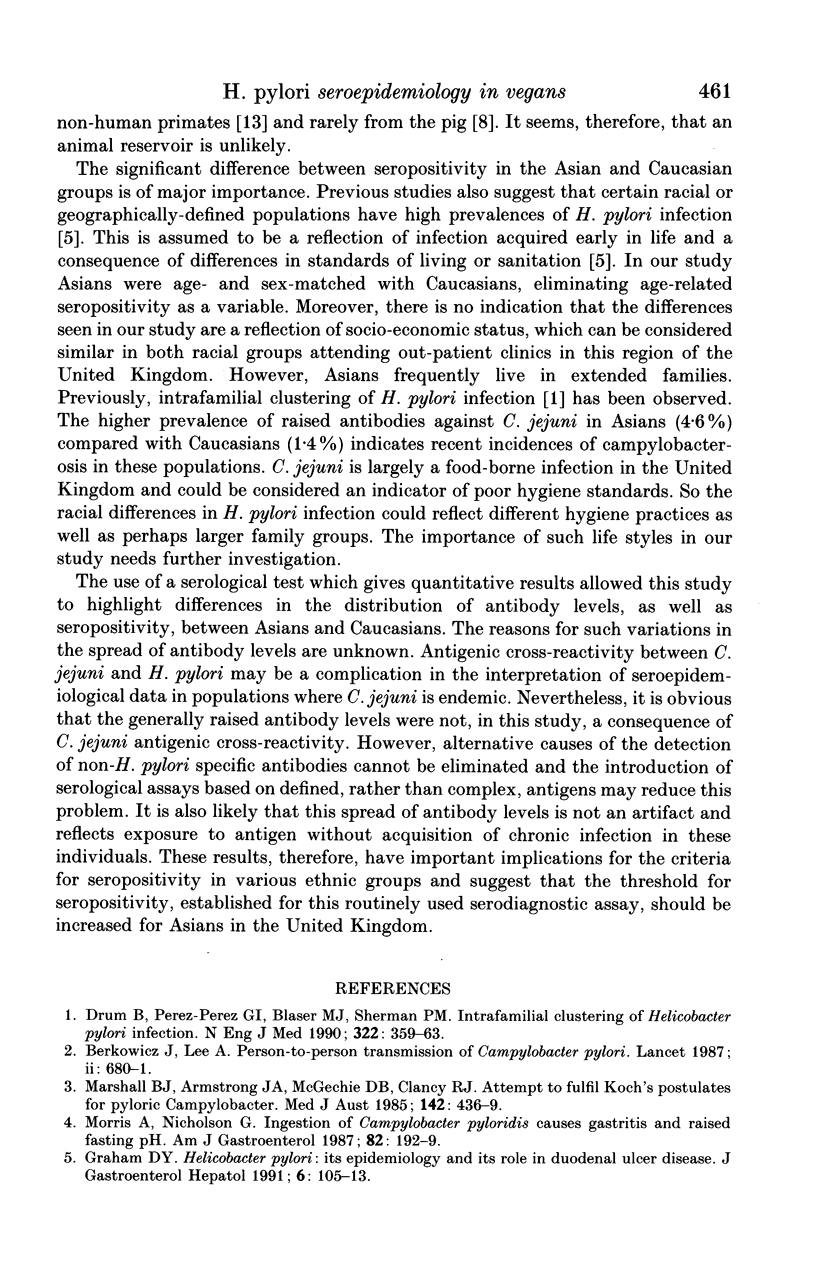
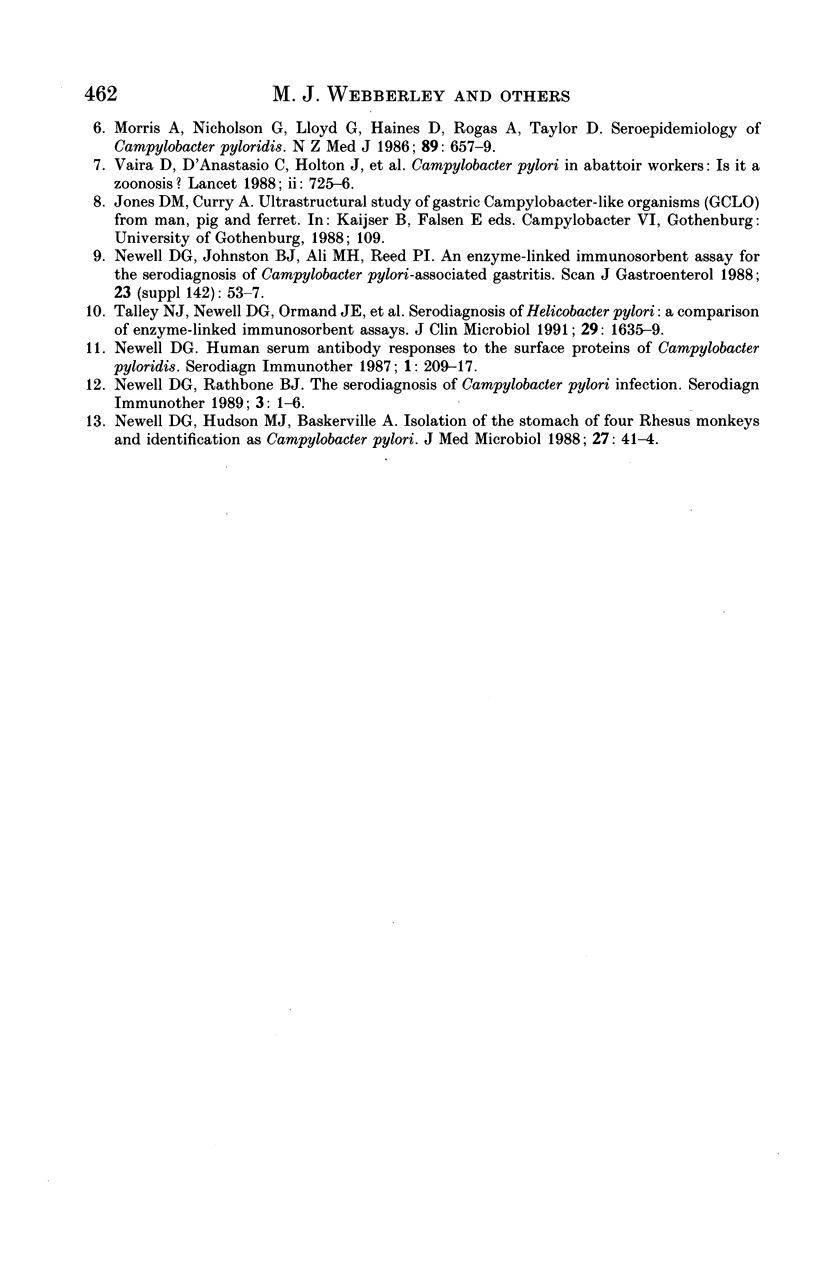
Selected References
These references are in PubMed. This may not be the complete list of references from this article.
- Berkowicz J., Lee A. Person-to-person transmission of Campylobacter pylori. Lancet. 1987 Sep 19;2(8560):680–681. doi: 10.1016/s0140-6736(87)92458-5. [DOI] [PubMed] [Google Scholar]
- Drumm B., Perez-Perez G. I., Blaser M. J., Sherman P. M. Intrafamilial clustering of Helicobacter pylori infection. N Engl J Med. 1990 Feb 8;322(6):359–363. doi: 10.1056/NEJM199002083220603. [DOI] [PubMed] [Google Scholar]
- Graham D. Y. Helicobacter pylori: its epidemiology and its role in duodenal ulcer disease. J Gastroenterol Hepatol. 1991 Mar-Apr;6(2):105–113. doi: 10.1111/j.1440-1746.1991.tb01448.x. [DOI] [PubMed] [Google Scholar]
- Marshall B. J., Armstrong J. A., McGechie D. B., Glancy R. J. Attempt to fulfil Koch's postulates for pyloric Campylobacter. Med J Aust. 1985 Apr 15;142(8):436–439. doi: 10.5694/j.1326-5377.1985.tb113443.x. [DOI] [PubMed] [Google Scholar]
- Morris A., Nicholson G. Ingestion of Campylobacter pyloridis causes gastritis and raised fasting gastric pH. Am J Gastroenterol. 1987 Mar;82(3):192–199. [PubMed] [Google Scholar]
- Morris A., Nicholson G., Lloyd G., Haines D., Rogers A., Taylor D. Seroepidemiology of Campylobacter pyloridis. N Z Med J. 1986 Sep 10;99(809):657–659. [PubMed] [Google Scholar]
- Newell D. G., Hudson M. J., Baskerville A. Isolation of a gastric campylobacter-like organism from the stomach of four rhesus monkeys, and identification as Campylobacter pylori. J Med Microbiol. 1988 Sep;27(1):41–44. doi: 10.1099/00222615-27-1-41. [DOI] [PubMed] [Google Scholar]
- Newell D. G., Johnston B. J., Ali M. H., Reed P. I. An enzyme-linked immunosorbent assay for the serodiagnosis of Campylobacter pylori-associated gastritis. Scand J Gastroenterol Suppl. 1988;142:53–57. doi: 10.3109/00365528809091714. [DOI] [PubMed] [Google Scholar]
- Talley N. J., Newell D. G., Ormand J. E., Carpenter H. A., Wilson W. R., Zinsmeister A. R., Perez-Perez G. I., Blaser M. J. Serodiagnosis of Helicobacter pylori: comparison of enzyme-linked immunosorbent assays. J Clin Microbiol. 1991 Aug;29(8):1635–1639. doi: 10.1128/jcm.29.8.1635-1639.1991. [DOI] [PMC free article] [PubMed] [Google Scholar]
- Vaira D., D'Anastasio C., Holton J., Dowsett J. F., Londei M., Bertoni F., Beltrandi E., Grauenfels P., Salmon P. R., Gandolfi L. Campylobacter pylori in abattoir workers: is it a zoonosis? Lancet. 1988 Sep 24;2(8613):725–726. doi: 10.1016/s0140-6736(88)90196-1. [DOI] [PubMed] [Google Scholar]


